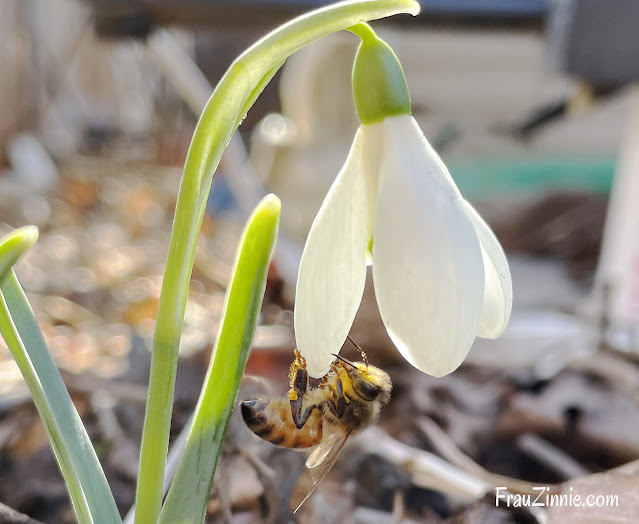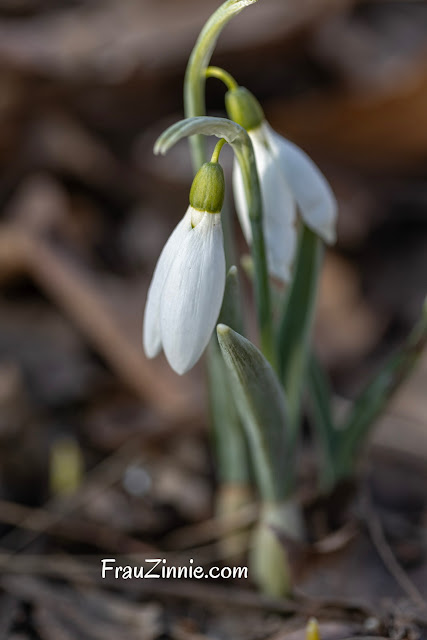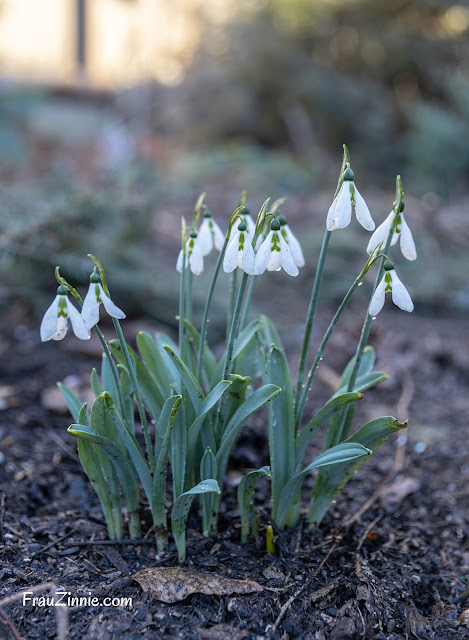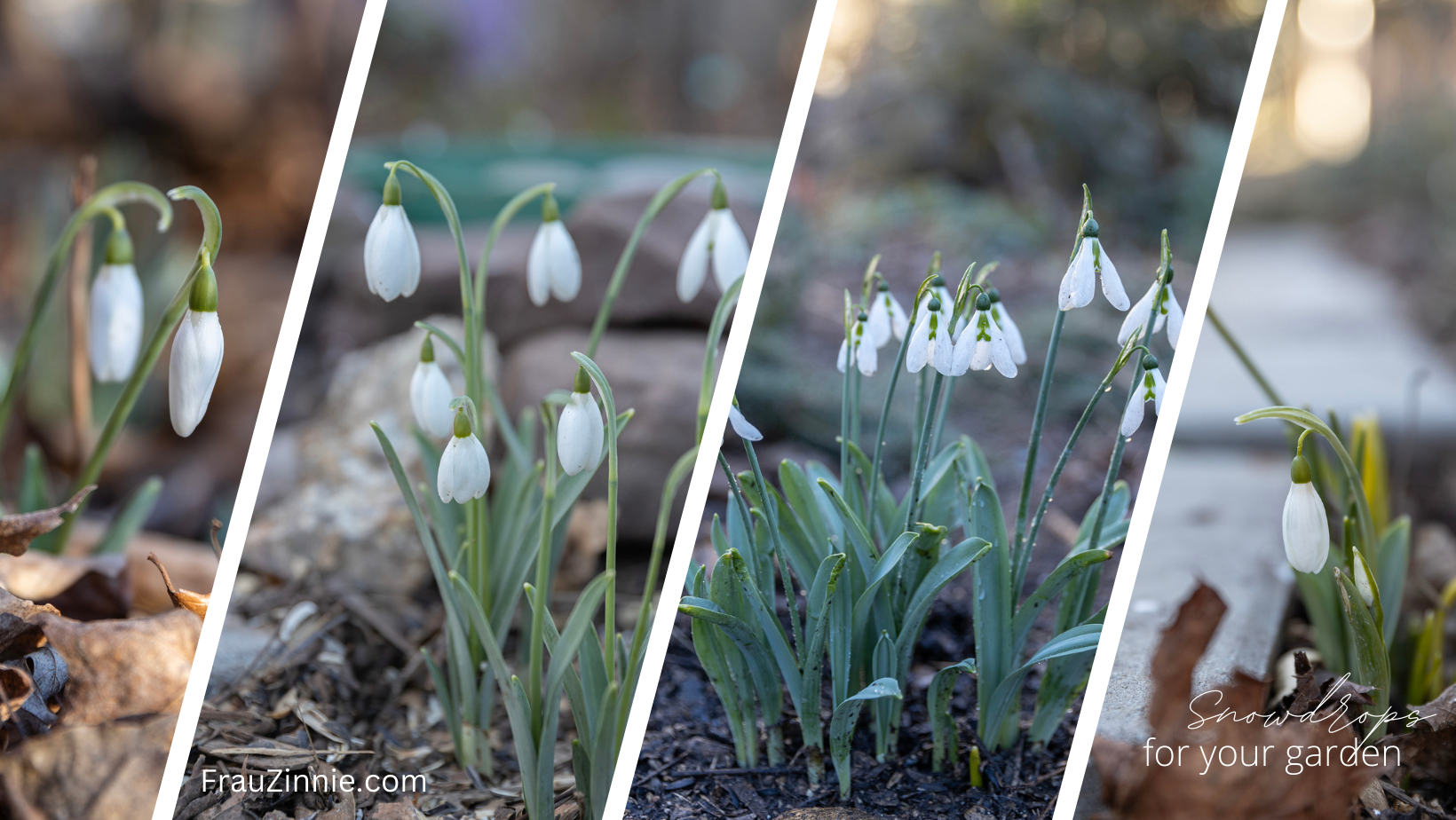It's no secret that snowdrops (Galanthus) are some of my favorite flowers, and I find that I need them especially in late winter when spring is close but not yet here.
Snowdrops are critter-resistant flower bulbs, so deer, rabbits and rodents will leave them alone. (It's a member of the Amaryllis family.) When planted in clusters, they form a carpet of flowers in your garden.
Each year I find room for more snowdrops in my garden, tucking them into existing flower beds or along pathway edges.
 |
| A honey bee will seek out snowdrop blooms for nectar and pollen. This photo was taken in February. |
Snowdrops are an early pollen and nectar source for bees. Honey bees will often leave the hive on warmer days and snowdrop blossoms are ready for them.
You can even stretch snowdrop blossoms so they will flower between November and March, depending on which variety you purchase. (I have one variety called 'Potter's Prelude' which reached peak bloom in December.)
 |
| 'Kite' Snowdrop features long petals. |
There are now more than 3,100 cultivars of snowdrops (as identified by author Freda Cox). Ten years ago, we were at 2,500. Cultivars contain different flower petal shapes, patterns, heights and more.
 |
| A snowdrop order from Carolyn's Shade Garden, mailed "in the green" and ready for planting. |
Snowdrops can be purchased as bulbs in the late-summer and fall, or "in the green" when they are in season. If you choose bulbs, get them in the ground as soon as possible so they do not dry out.
 |
| Top image shows frost effect on snowdrops and bottom photo shows how snowdrops recover once temperatures warm during the day. |
Cold nights may cause the plants and flowers to collapse, but they will bounce back once the temperature rises. This is because the plant contains a naturally occurring antifreeze that prevents it from being damaged.
 |
| 'Standing Tall' snowdrop in the back garden. It can reach 12" in height. |
Cool tidbit: The original name of Snow White (Brothers Grimm) was Snowdrop. The TV series "Once Upon a Time" acknowledged this connection by having Snow White/Mary Margaret interact with the flowers in one episode.
 |
| Galanthus elwesii (above) has larger flowers than Galanthus nivalis. |
Some snowdrops have green patterns that look like little faces, or an upside down heart.
 |
| Snowdrops in the front garden. |
The most expensive snowdrop ever purchased was the variety called 'Golden Tears' (Galanthus plicatus) - and it sold for £1,850 in an eBay auction in 2022. (If that was purchased today, it would be $2,330.55 USD, which was close to the exchange rate in 2022.)
Do you grow snowdrops in your garden?
Originally published on Feb. 9, 2024. Updated on Dec. 2, 2024.








No comments
Post a Comment